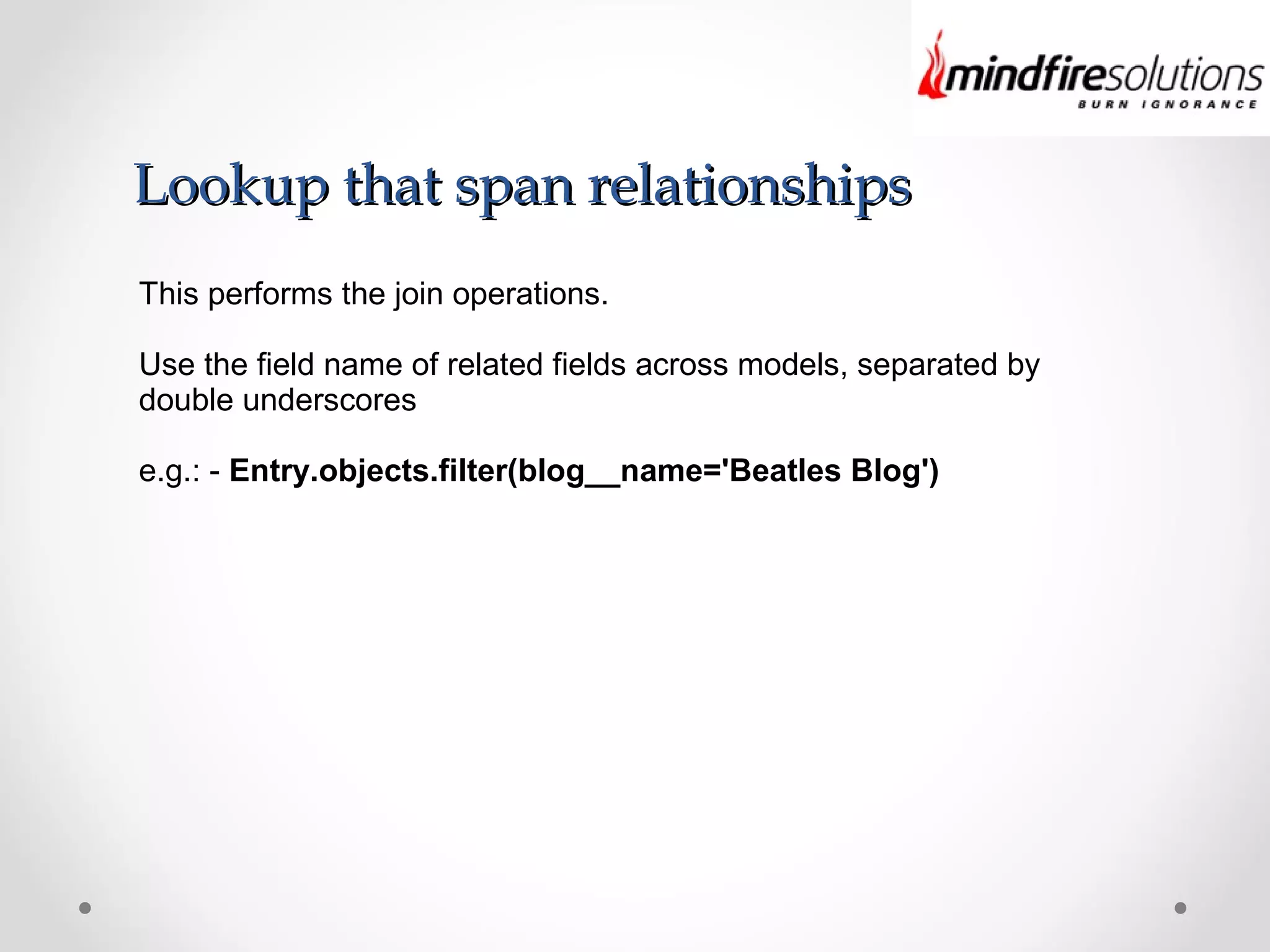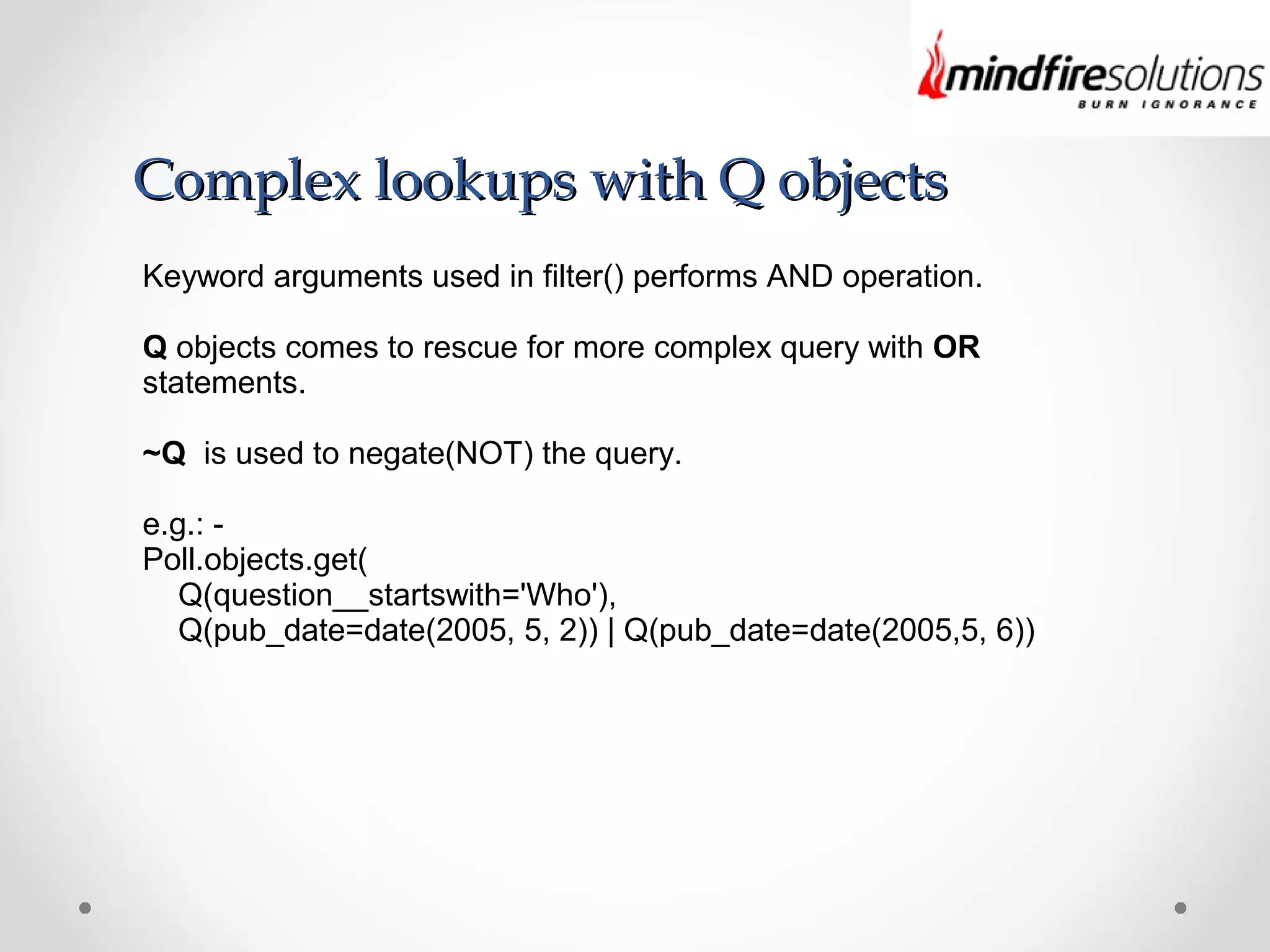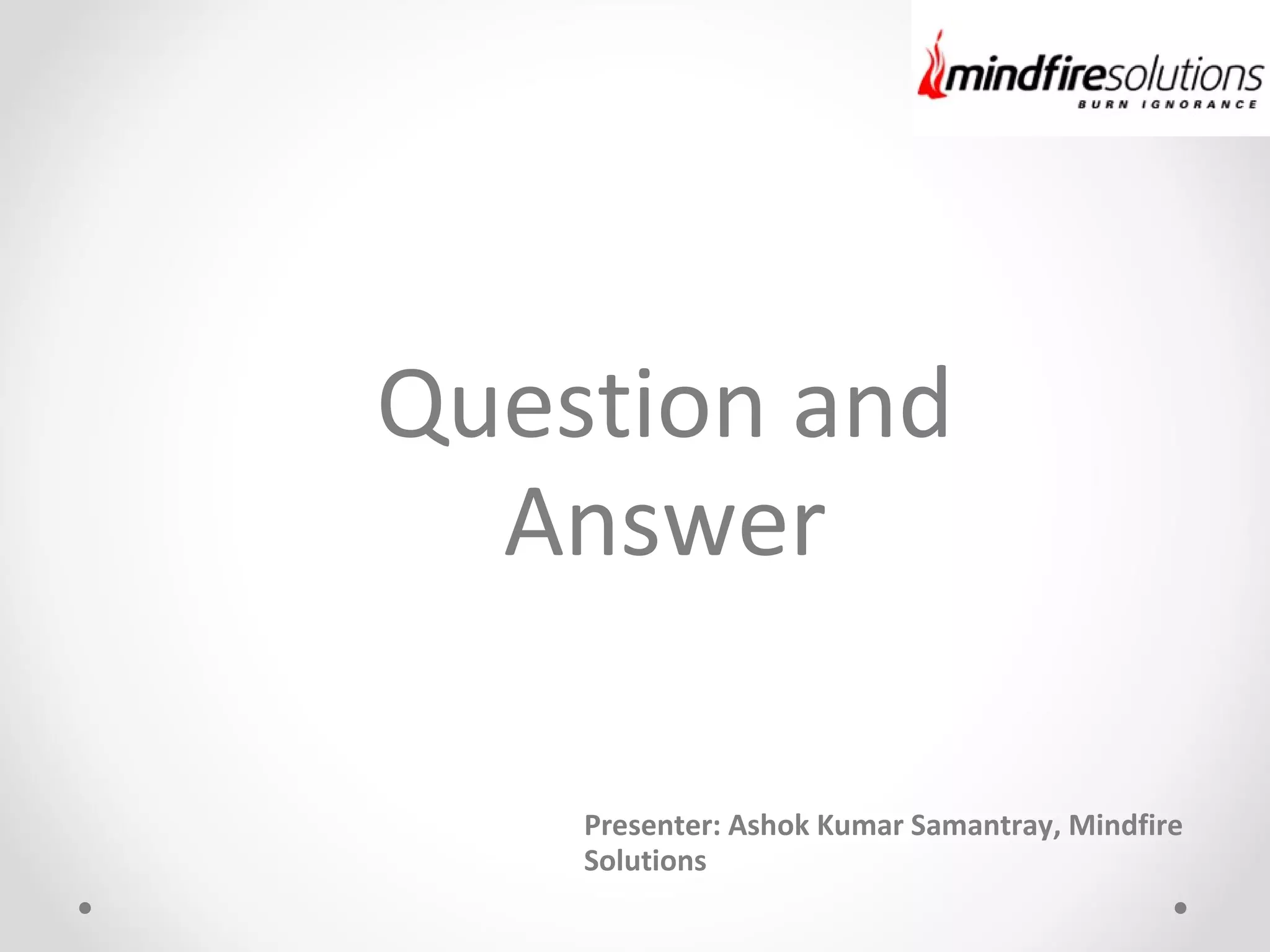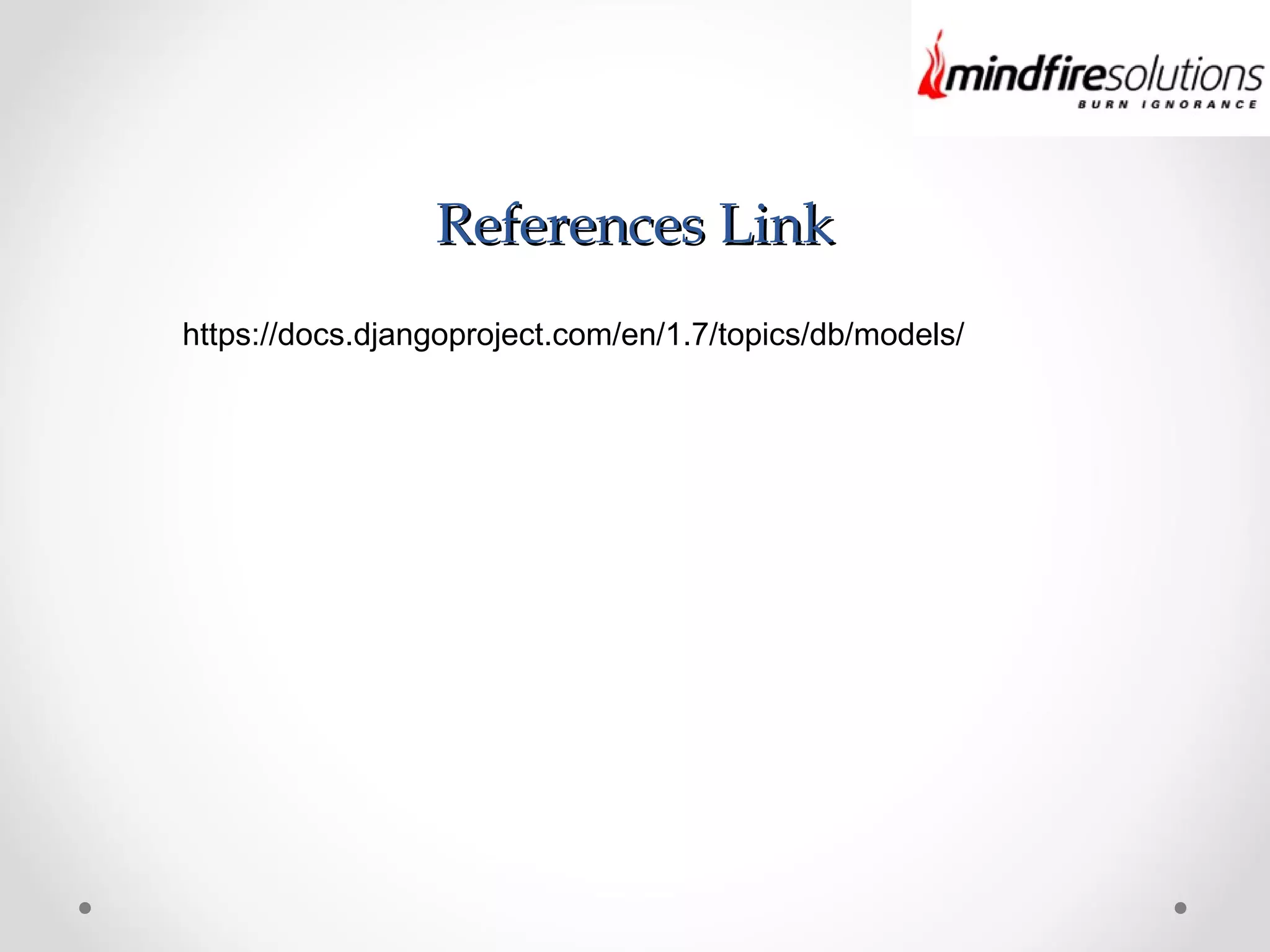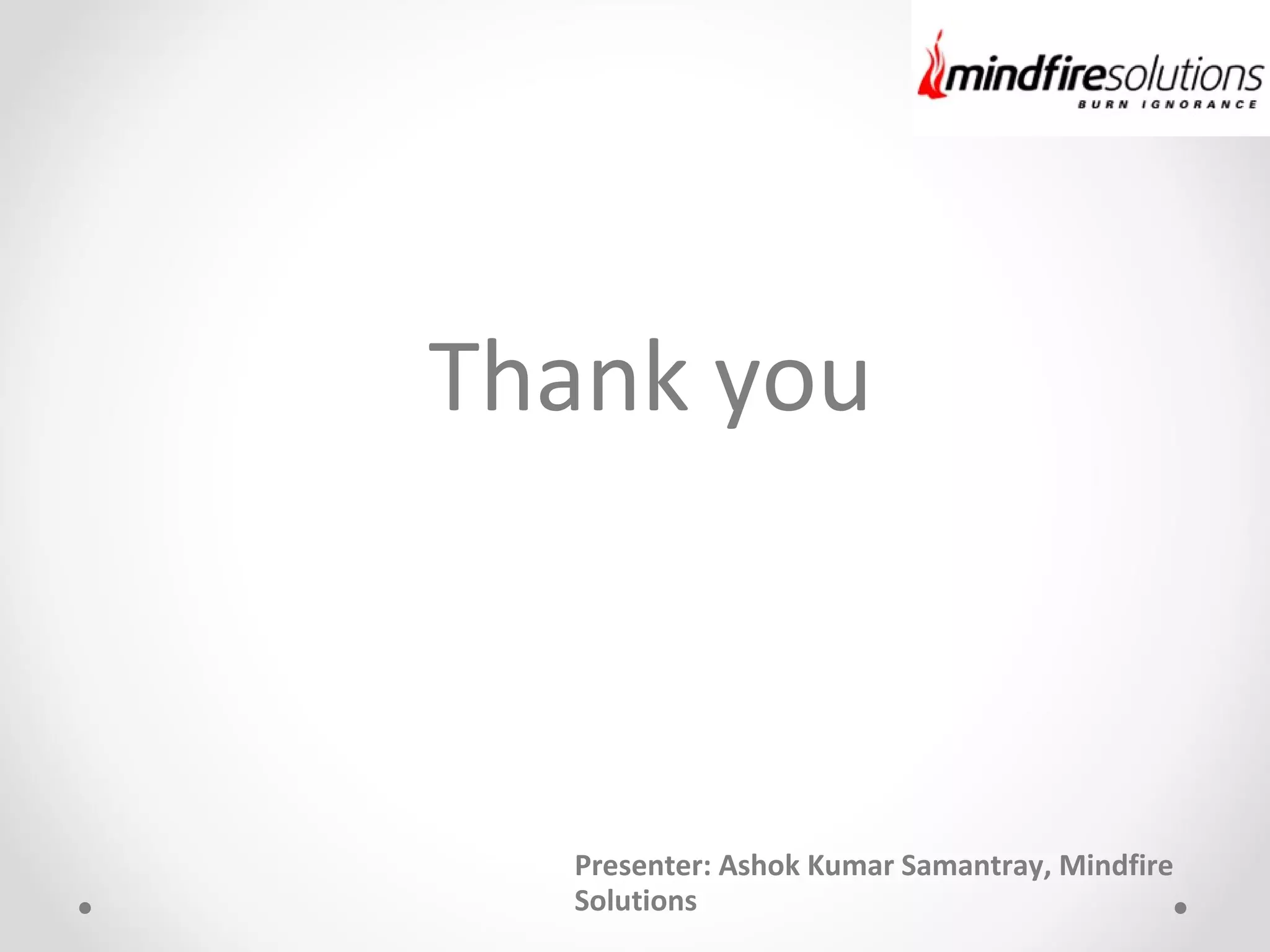The document is a presentation by Ashok Kumar Samantray from Mindfire Solutions, covering various topics in Python and Django. Key topics include creating, saving, retrieving, and deleting objects in a database, as well as complex queries using Q objects. Additionally, it provides links for further resources and ways to connect with the presenter.



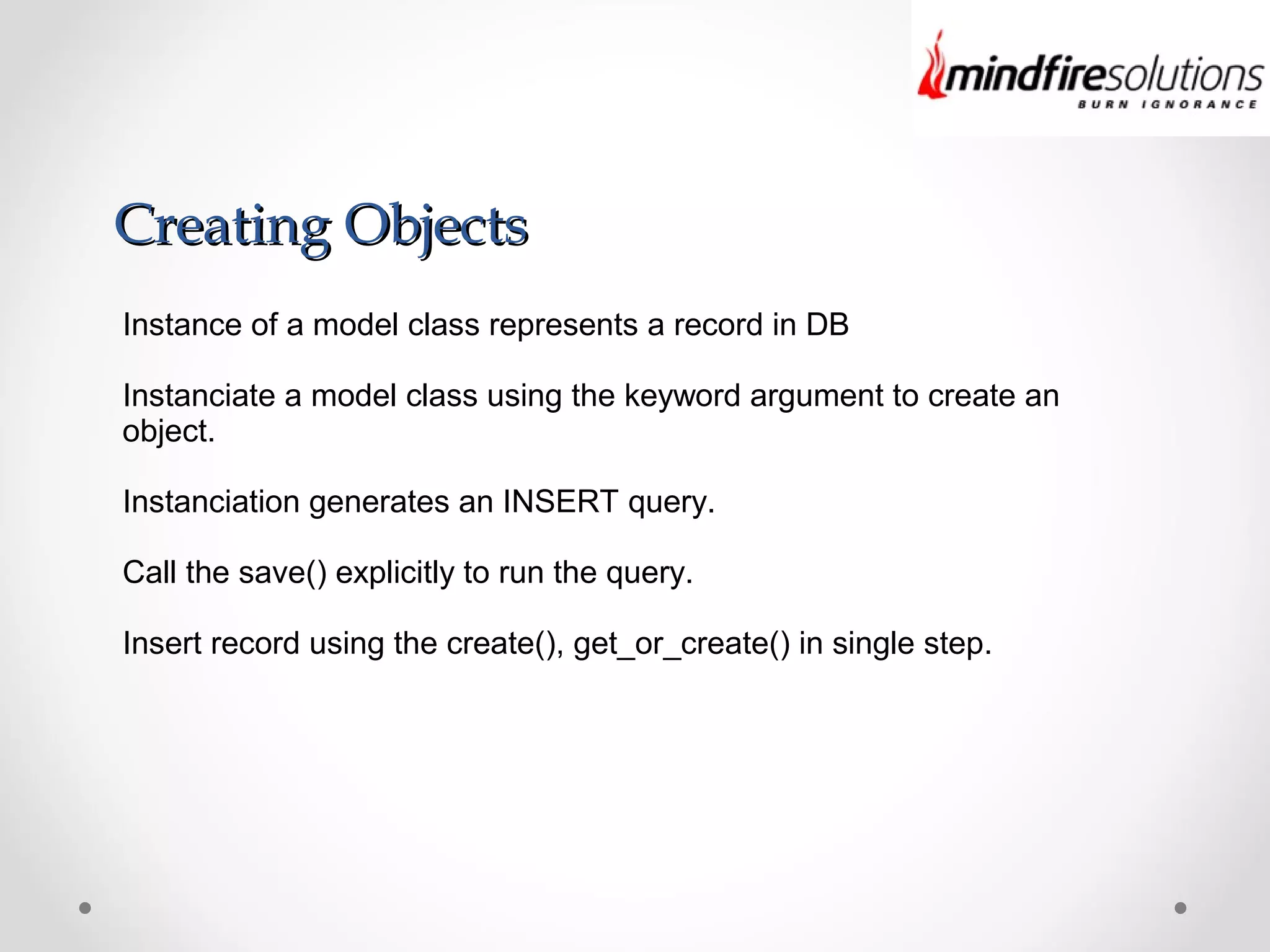
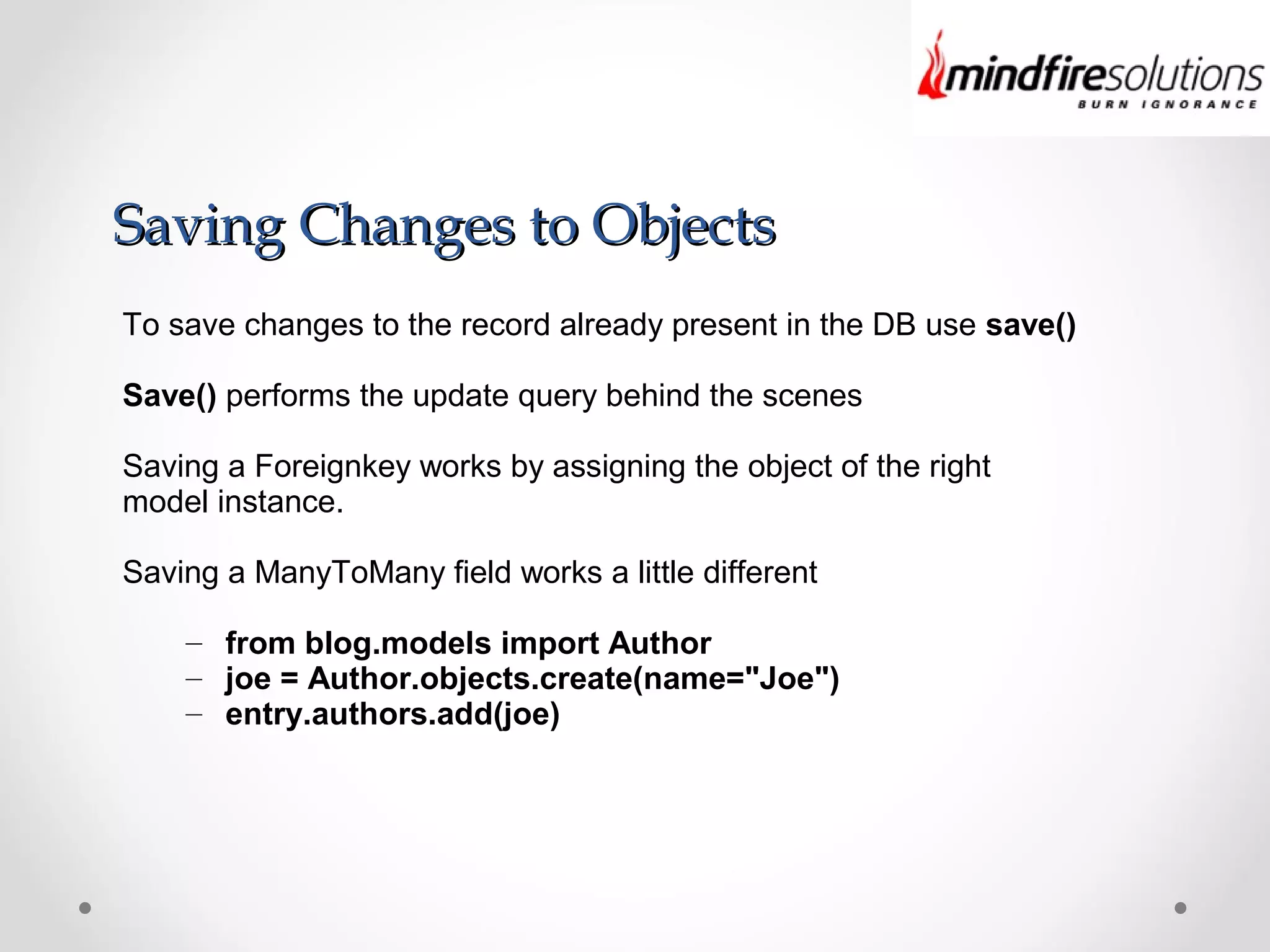
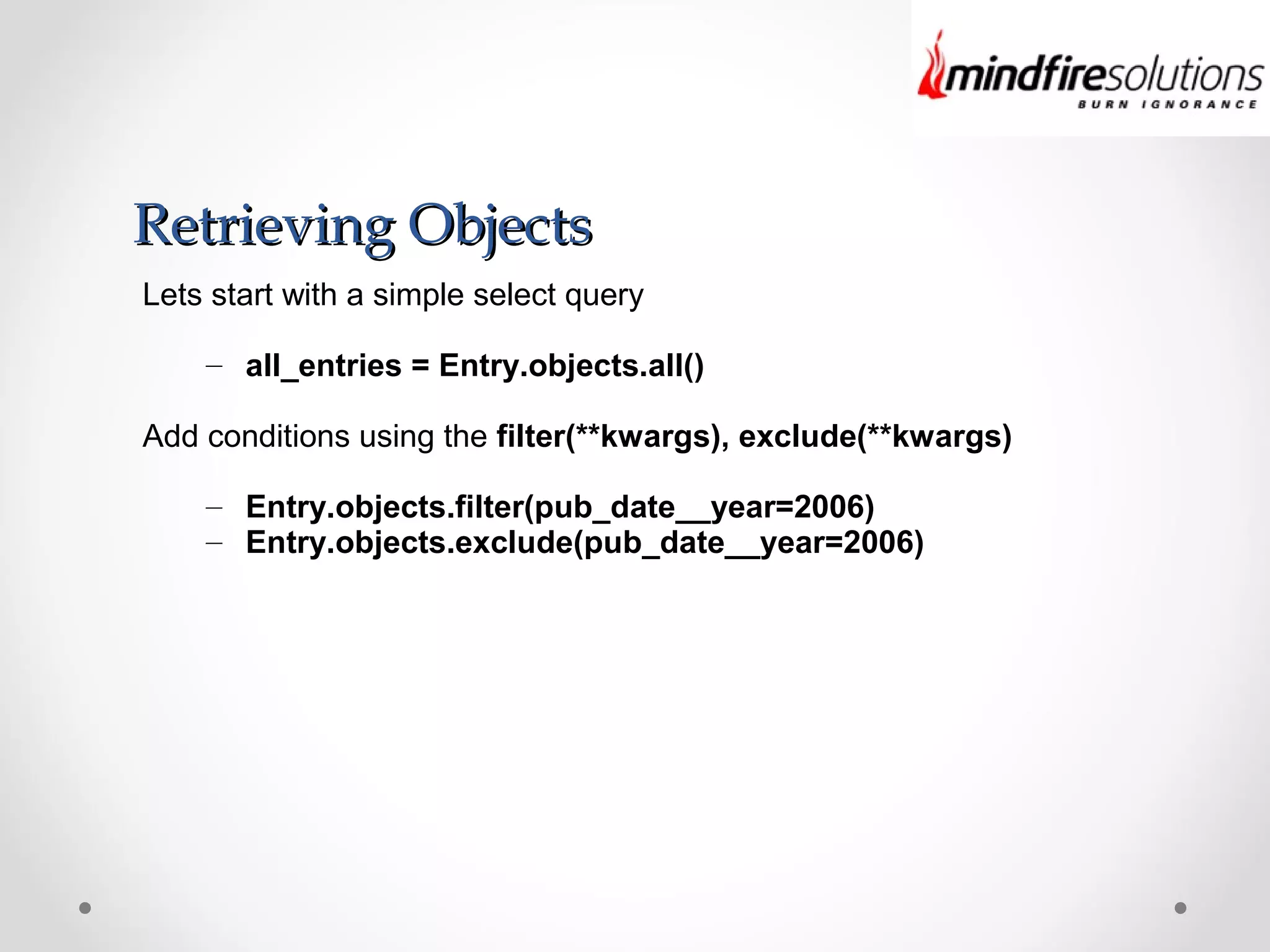
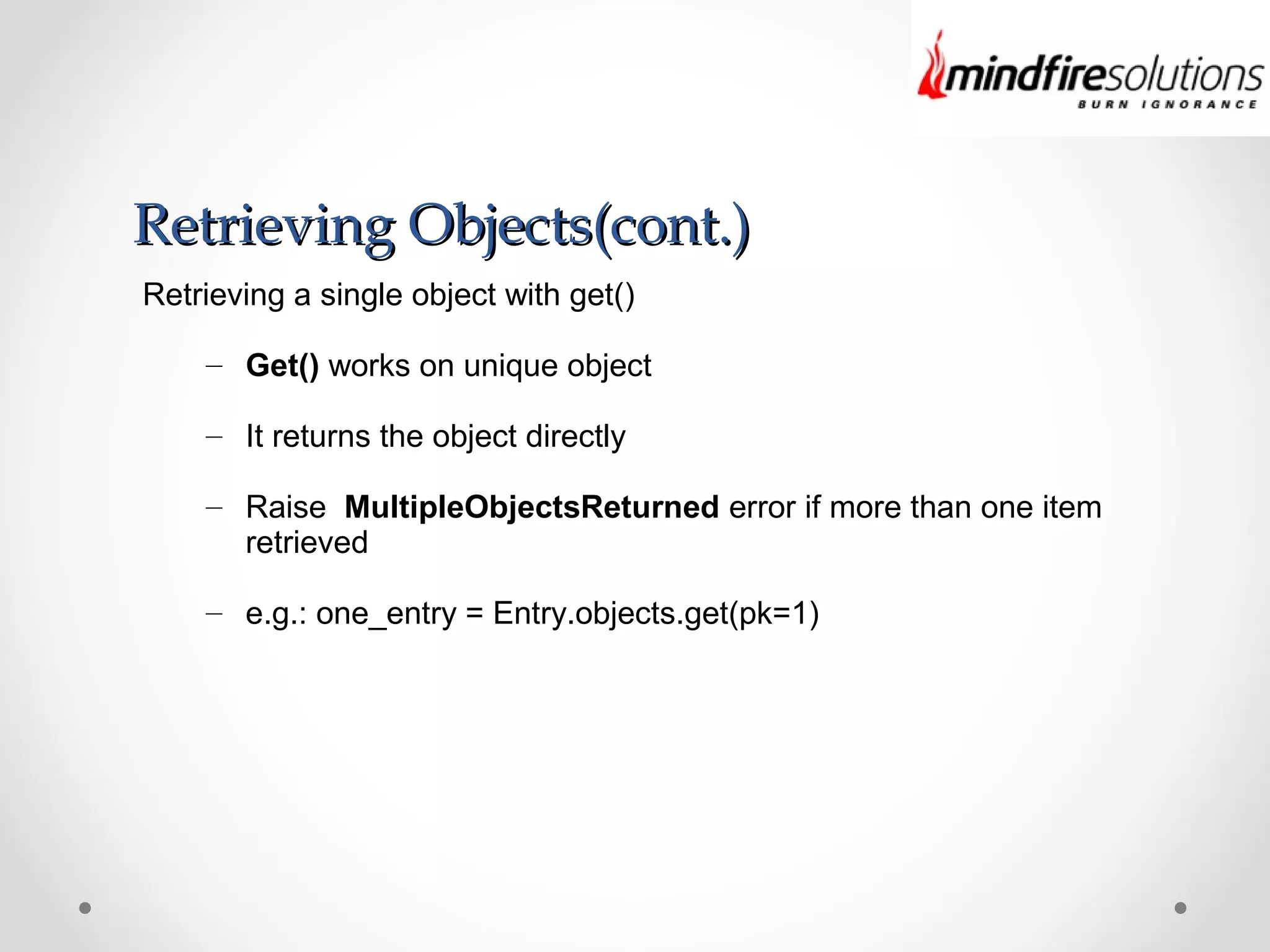
![Limit, Offset and OrderingLimit, Offset and Ordering A Queryset is iterable. Queryset can be sliced like all other iterables Limit and Offset by slicing the queryset e.g.:- Entry.objects.all()[5:10] Negative indexing is not supported e.g:- Entry.objects.all()[-1] Use of step parameter is allowed and it evaluates the querysets order_by() is used for order the result e.g:- Entry.objects.order_by('headline')](https://image.slidesharecdn.com/djangoquerysets-150504011629-conversion-gate02/75/Django-Queryset-8-2048.jpg)

